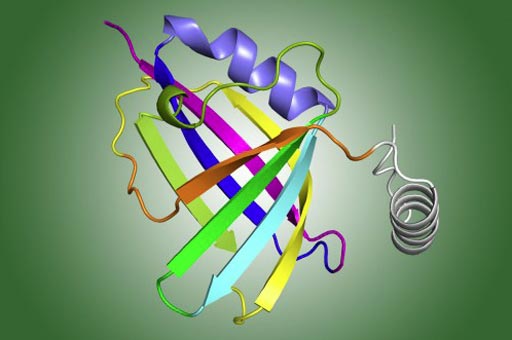RSV Non-Structural Protein Interferes with Host Immune Response
By LabMedica International staff writers
Posted on 19 Jul 2017
A team of molecular virologists used X-ray crystallography to establish the structure of a protein that enhances the infectivity of respiratory syncytial virus (RSV) by interfering with the host's immune response.Posted on 19 Jul 2017
RSV is a major cause of morbidity and mortality in the pediatric, elderly, and immune-compromised populations. Very little has been known about how immunosuppressive proteins produced by the virus interact with host components that limit RSV replication. While it was known that RSV encodes for non-structural (NS) proteins that are important modulators of the immune response, the role of these proteins in viral pathogenesis was not well understood.

Image: Researchers have solved the structure of the NS1 protein that helps the common respiratory virus RSV evade the immune system (Photo courtesy of Dr. Daisy Leung, Washington University School of Medicine).
Investigators at the Washington University School of Medicine (St. Louis, MO, USA) used X-ray crystallography to determine the structure of RSV's NS1 protein. The structure of NS1 suggested that it is a structural paralogue of RSV matrix (M) protein. Comparative analysis of the shared structural fold with M revealed regions unique to NS1. Studies on NS1 wild type or mutant alone or in recombinant RSVs demonstrated that structural regions unique to NS1 contributed to modulation of host responses, including inhibition of type I interferon responses, suppression of dendritic cell maturation, and promotion of inflammatory responses.
In particular, the alpha 3 helix region of NS1 was identified as being critical for suppressing the immune response. To follow up on this finding, the investigators generated RSV variants with NS1 that was normal or defective in the alpha 3 helix region and measured the effect on the immune response towards cells infected with these viruses. They reported in the June 30, 2017, online edition of the journal Nature Microbiology that viruses with the mutated helix region did not suppress the immune response while the ones with the intact helix region did.
“We solved the structure of a protein that has eluded the field for quite some time,” said senior author Dr. Daisy Leung, assistant professor of pathology and immunology, biochemistry, and molecular biophysics at Washington University School of Medicine. “Now that we have the structure, we are able to see what the protein looks like, which will help us define what it does and how it does it. And that could lead, down the road, to new targets for vaccine or drug development.”
Related Links:
Washington University School of Medicine













